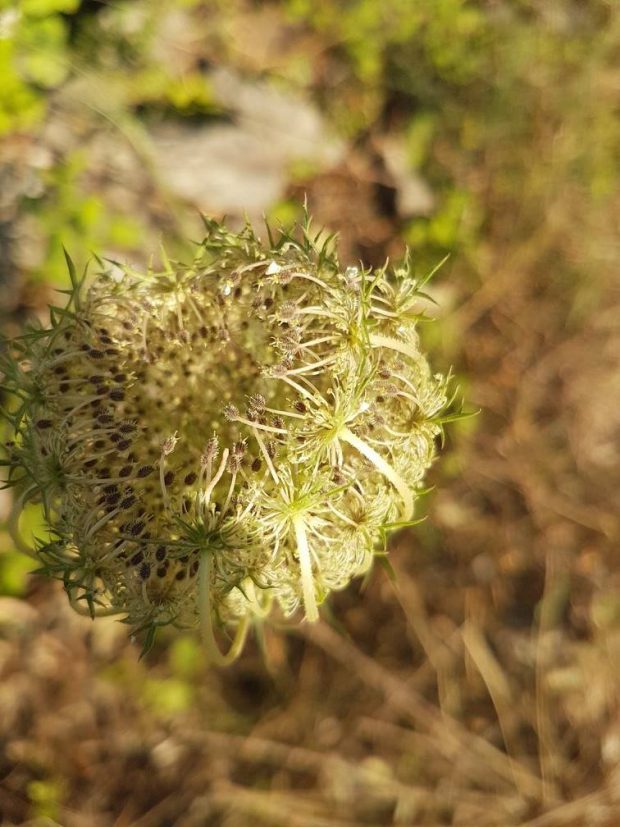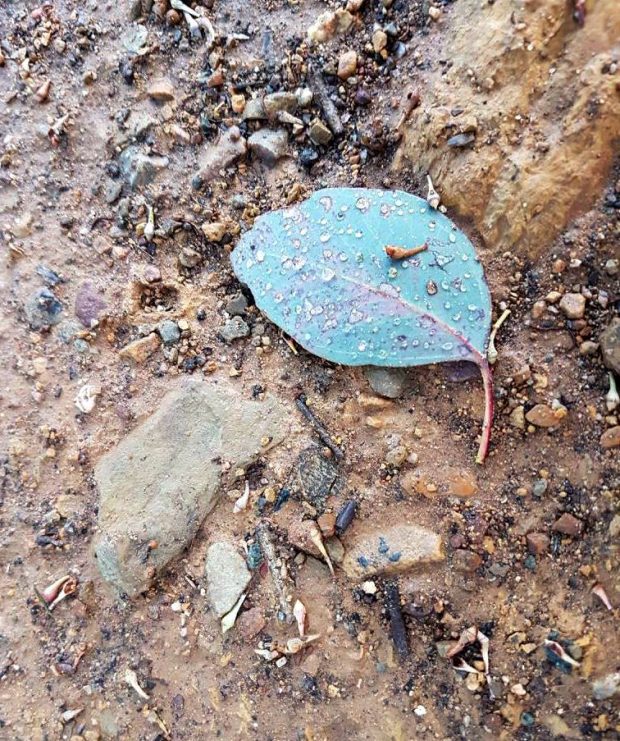Emplacement
by Jessica White
‘One can never fault a Brisbane winter,’ I smugly tell my friends in the south. The air is mild, the light golden, and one only needs a jumper in the evenings. Come summer, though, it’s a different story. I’m far from smug when I’m lying on the couch before a fan blowing hot air into my face. I’ve never lived in a home with air-conditioning and neither do I want to; I resent the sense of being boxed in. On oppressive days I usually go to public places such as a pub or the State Library, but as the thermometer inches towards the 40s, I’m too hot to persuade myself to move off the couch and down the road to the pub. Instead I stare at the ceiling, waiting for the day and my body to cool.
In my state of heat-induced catatonia, I contemplate mobility and how it’s an ever-present issue for people with disabilities. We try constantly to negotiate places made for able-bodied persons. Those in wheelchairs might think about terrain and height; those who are blind may need to voices to announce their bus stops; those with sensitivities associated with autism might avoid loud or bright places. As a deaf person, I usually have to sit up the front of a class to hear and lipread, or I am on the edge of a group, trying to listen and join in.
For this reason I think often about emplacement. I think about my own position between the worlds of hearing and Deaf people.[1] I move constantly between both, feeling like I don’t belong to either. I think, too, about those who have been displaced from their homelands, such as Australia’s First Nations people, or those who have become refugees, moving across land and ocean in search of solid, welcoming ground. I think about how our place in our country and society informs our perspectives on the lives of others, both human and non-human.
In her essay ‘The Country is Like a Body’, Mununjali author Ellen van Neerven writes:
You say your ankles are sore and stiff, but it originates in your hips and starts to affect your back and knees. Uncle Lewis talks of “a multi-nation” approach to climate, where Indigenous Nations worked together to care for the land and prevent disasters and waste. He points to the movement of wind and cloud from Western Australia to South Australia as just one way the country works like the body. First Nations engaged in “co-operative thinking” – the movement of winds and clouds across Western Australia to South Australia is dependent on growing trees in certain places and lighting fires in certain times: “When they cut trees down at Cummins (in WA), the rainfall fell or was reduced (in SA). So we got an indicator that’s factual and we got to look at this.”[2]
The body is part of an ecosystem: it affects us, and we affect it, to the point where we shouldn’t even be separating the human and non-human. Indigenous people have known this for 50,000 years and they are sensitive to the changes in climate and country. For those walled in by air-conditioning, cars and offices, however, the knowledge is coming far too slowly.
 Writers are the canary in the coalmine, if we take into account the surge in climate change fiction in recent years, such as James Bradley’s Clade.[3] There are also ever-expanding chronicles of the loss of that ‘world of long-gone natural abundance; a place of astonishing throngs,’ as canvassed brilliantly by Delia Falconer in her recent Sydney Review of Books essay on extinction.[4] There is new nature writing, such as that by Inga Simpson in her carefully crafted eco-memoir Understory, in which she articulates her love for a place and its trees in the Sunshine Coast hinterland, and how encroaching development threatens it and her self.[5] There is the detailed attention given to the lives of eucalypts by Ashley Hay in her prizewinning essay ‘The Forest at the Edge of Time,’ which reminds us that Australia’s iconic trees may not be around to be an icon.[6] There are stories of catastrophe in near-future novels such as Alice Robinson’s Anchor Point, which ends with bushfires surging on the horizon.[7] There is the fact-crammed but pellucid writing of Anna Krien’s Quarterly essay The Long Goodbye on the devastation of the Great Barrier Reef from global warning, mining, and Queensland’s arcane and diffident environmental legislation.[8] There is writing by First Nations authors such as Alexis Wright’s The Swan Book,[9] Ellen van Neerven’s Heat and Light[10] and Tony Birch’s essays,[11] which draw on their abiding attachment to country to illuminate upheavals in their environment since colonisation, and the resilience of First Nations people in surviving these upheavals.
Writers are the canary in the coalmine, if we take into account the surge in climate change fiction in recent years, such as James Bradley’s Clade.[3] There are also ever-expanding chronicles of the loss of that ‘world of long-gone natural abundance; a place of astonishing throngs,’ as canvassed brilliantly by Delia Falconer in her recent Sydney Review of Books essay on extinction.[4] There is new nature writing, such as that by Inga Simpson in her carefully crafted eco-memoir Understory, in which she articulates her love for a place and its trees in the Sunshine Coast hinterland, and how encroaching development threatens it and her self.[5] There is the detailed attention given to the lives of eucalypts by Ashley Hay in her prizewinning essay ‘The Forest at the Edge of Time,’ which reminds us that Australia’s iconic trees may not be around to be an icon.[6] There are stories of catastrophe in near-future novels such as Alice Robinson’s Anchor Point, which ends with bushfires surging on the horizon.[7] There is the fact-crammed but pellucid writing of Anna Krien’s Quarterly essay The Long Goodbye on the devastation of the Great Barrier Reef from global warning, mining, and Queensland’s arcane and diffident environmental legislation.[8] There is writing by First Nations authors such as Alexis Wright’s The Swan Book,[9] Ellen van Neerven’s Heat and Light[10] and Tony Birch’s essays,[11] which draw on their abiding attachment to country to illuminate upheavals in their environment since colonisation, and the resilience of First Nations people in surviving these upheavals.
As I lie on my couch, heat wrapped against my skin like a washer plucked from the microwave, I hope desperately that these narratives are reaching people, leading them to think about ecosystems and the impact of their bodies within and upon them.
What will happen to people with disability with climate change? To get an idea, one only has to look at the images of vulnerable elderly folk sitting in the rising floodwaters of Hurricane Harvey. This is not to say that we will be completely disenfranchised. The editors of Defying Doomsday collated a series of stories to demonstrate how people with disability will survive apocalypses with determination and ingenuity, refuting the idea that we will be a burden.[12] Ultimately however, if we don’t stop the warming, everyone’s bodies, whatever their shape or form, will cease to matter.
The planet has a fever, suggests Anna Krien.[13] Fevers raise body temperature to help fight the bacteria or virus of an illness. If the earth is a self-regulating system, then the rising fever – those days that burn into the 40s – will eradicate humans. As the earth cools, like my body did on that boiling Brisbane day, so too will it begin to function again. We don’t need to worry about the earth; it will take care of itself. But if we want to save our selves, we had better start by picking up a book.
[1] Those who identify with deafness as a culture rather than a medical diagnosis.
[2] Ellen van Neerven, ‘The Country is Like a Body.’ Right Now. http://rightnow.org.au/essay/the-country-is-like-a-body/
[3] James Bradley. Clade. Penguin Group Australia, 2015
[4] Delia Falconer. ‘The Opposite of Glamour.’ Sydney Review of Books. https://sydneyreviewofbooks.com/the-opposite-of-glamour-delia-falconer/
[5] Inga Simpson. Understory : a Life with Trees. Hachette Australia, 2017.
[6] Ashley Hay. ‘The Forest at the Edge of Time.’ Australian Book Review. No. 375, 2015.
[7] Alice Robinson. Anchor Point. South Melbourne, Vic., Affirm Press, 2015.
[8] Anna Krien. The Long Goodbye : Coal, Coral and Australia’s Climate Deadlock. Black Inc., 2017.
[9] Alexis Wright, The Swan Book. Giramondo, 2013.
[10] Ellen Van Neerven. Heat and Light. UQP, 2014.
[11] Tony Birch, ‘Climate Change, Recognition and Social Place-Making.’ Unstable Relations: Indigenous People and Environmentalism in Contemporary Australia. UWA, 2016.
[12] Tsana Dolichva and Holly Kench (eds). Defying Doomsday. Twelfth Planet Press, 2016.
[13] Anna Krien. The Long Goodbye, p. 16.

